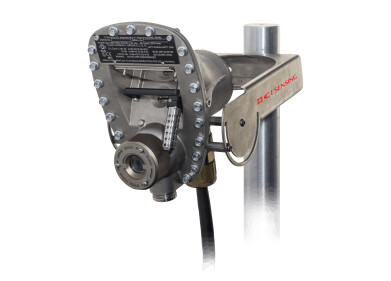Air Monitoring
Environment in the 2010s - Emissions
Dec 31 2019
Often seen as a key indicator of environmental performance, emissions over the last 10 years make troubling reading for anyone concerned about the future of our planet. Carbon dioxide (CO2) often steals the headlines, but other greenhouse gas (GHG) emissions trends contribute to global warming and have a significant impact upon the air quality in urban environments, as well.
Despite growing awareness on the issue, the 2010s have witnessed emissions continue to steadily climb across a variety of sources and industries. Here’s a quick rundown of how emissions have increased in the last 10 years, from agriculture to energy to transportation.
Agriculture
Between 1990 and 2010, emissions from agriculture increased across the world by 8%, reaching six billion tonnes of GHGs in 2011. That accounted for approximately 13% of total GHG emissions at the time and the rate of agricultural emissions is only expected to rise by a further 15% by 2030, by which point they are projected to reach as much as seven billion tonnes per annum.
The largest percentage (39.3%) of agricultural emissions comes from enteric fermentation, which is the technical term given to the flatulence of livestock such as sheep and cattle. Other leading contributors are manure (15.2%), synthetic fertilisers (11.8%) and rice cultivation (10.1%). China, India, Brazil and the USA are the biggest offenders when it comes to agricultural emissions, responsible for 37% of all emissions between them.
Energy
With the world’s population continuing to swell and prosperity becoming more commonplace across the globe, it’s no surprise that emissions from the energy industry have also grown steadily throughout the 2010s. Despite the introduction of the Medium Combustion Plant Directive (MCPD) in 2015, demand for energy has risen so much that so too have the emissions associated with it.
Earlier this year, it was reported that 2018 saw carbon emissions from the energy industry rise faster than in any year since 2011, dealing a blow for environmentalists who were hoping they may have plateaued. Indeed, between 2014 and 2016, they increased by a mere 0.25%, giving rise to hopes that they might level off, but they have continued to soar once more and are projected to increase by at least 0.6% in 2019.
Transportation
It’s bad news from the transport sector too, unfortunately. Although a push towards more environmentally-friendly alternatives to traditional combustion engines, such as electric vehicles (EVs) and hybrid cars, has resulted in more efficient and eco-friendly vehicles on the road, the total number of vehicles has also risen substantially in the last 10 years.
In the UK, this has seen emissions from road transportation rise by 6% between 1990 and 2017, despite the fact that Britain’s overall GHG emissions have fallen by 32% in the same period. Clearly, the British transport sector is lagging behind others when it comes to cleaning up its act and curbing its carbon (and GHG) footprint.
Digital Edition
AET 28.2 April/May 2024
May 2024
Business News - Teledyne Marine expands with the acquisition of Valeport - Signal partners with gas analysis experts in Korea Air Monitoring - Continuous Fine Particulate Emission Monitor...
View all digital editions
Events
Jul 10 2024 Birmingham, UK
Jul 21 2024 Cape Town, South Africa
Australasian Waste & Recycling Expo
Jul 24 2024 Sydney, Australia
Jul 30 2024 Jakarta, Indonesia
China Energy Summit & Exhibition
Jul 31 2024 Beijing, China


















